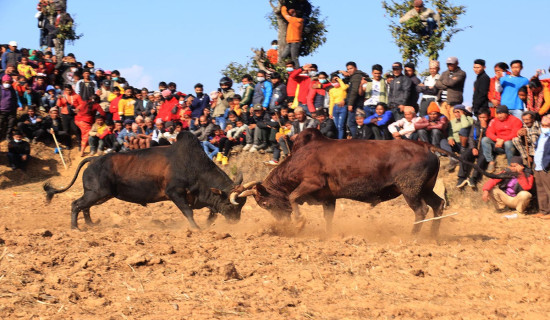- Friday, 16 January 2026
Floods In The Desert
Alba Nakuwa
Kenya experienced heavy rainfall in parts of the country between October and December 2023. This led to strangely mixed reactions of joy and devastation. For some people, it meant that the farming season could finally begin after long dry spells. For others, especially in the arid and semi-arid areas, it meant displacement, damage to property and the loss of livelihoods.
The massive downpours were accompanied by heavy storms and led to the flooding of lakes such as Lake Turkana. Rivers burst their banks, which immediately caused landslides. Turkana County was particularly affected. Here, the rains also caused devastating damage to the Kakuma camp, the involuntary home of more than 250,000 people from more than seven countries in East and Central Africa.
The floods have exacerbated the humanitarian crisis in the region. At least 30,000 refugees were displaced by the floods according to the UN refugee agency (UNHCR). Many of those affected had not yet moved to permanent settlements where they would have the chance to start their lives anew after living in the refugee camp for – in some cases – decades.
Lomana Lotiang, a South Sudanese in Kakuma, is one of the refugees directly affected by the floods. The father of two runs a second-hand clothes shop in the camp. His source of income sank in the heavy rains, as did thousands of houses of other refugees. The neighbouring host community, the Turkana, had to watch as their livestock drowned.
“Originally, the UNHCR had relocated the displaced people to makeshift camps and a primary school after the heavy rains during the holidays,” says Lotiang.
However, when the schools reopened, all people had to move from the primary school to the makeshift camps, which were already overcrowded. The poor infrastructure in the camp prevented the water from draining quickly and so standing water increased the risk of contracting waterborne diseases such as cholera and diarrhoea throughout Kakuma.
According to research by the Kenya Meteorological Department, floods that immediately follow a prolonged drought can be attributed to both natural and man-made factors. The combination of erratic climate patterns, deforestation and poor land use in the region has left it increasingly exposed to unpredictable weather events.
Most people in Kakuma and throughout Turkana County cut down trees for wood and charcoal, which they use for building fences or cooking. However, removing vegetation or cutting down trees reduces the natural resistance of the soil, as it is exposed and can therefore no longer absorb accumulating water. This increases the risk of flooding.
The fact that the UNHCR and others, especially state actors, often only become active with sometimes uncoordinated rescue missions when a natural disaster occurs, is also part of the problem. Much more combined efforts are needed from the authorities, the Turkana community and refugees in the camp that can gear the region towards a more holistic approach of sustainable land management.
Reforestation and the introduction of climate-resilient agriculture, such as the cultivation of drought-resistant crops, are necessary steps. However, the most important one is to promote education and awareness-raising campaigns in the affected communities so that they understand the risks associated with deforestation and subsequent droughts and floods.
-- Development And Cooperation
















